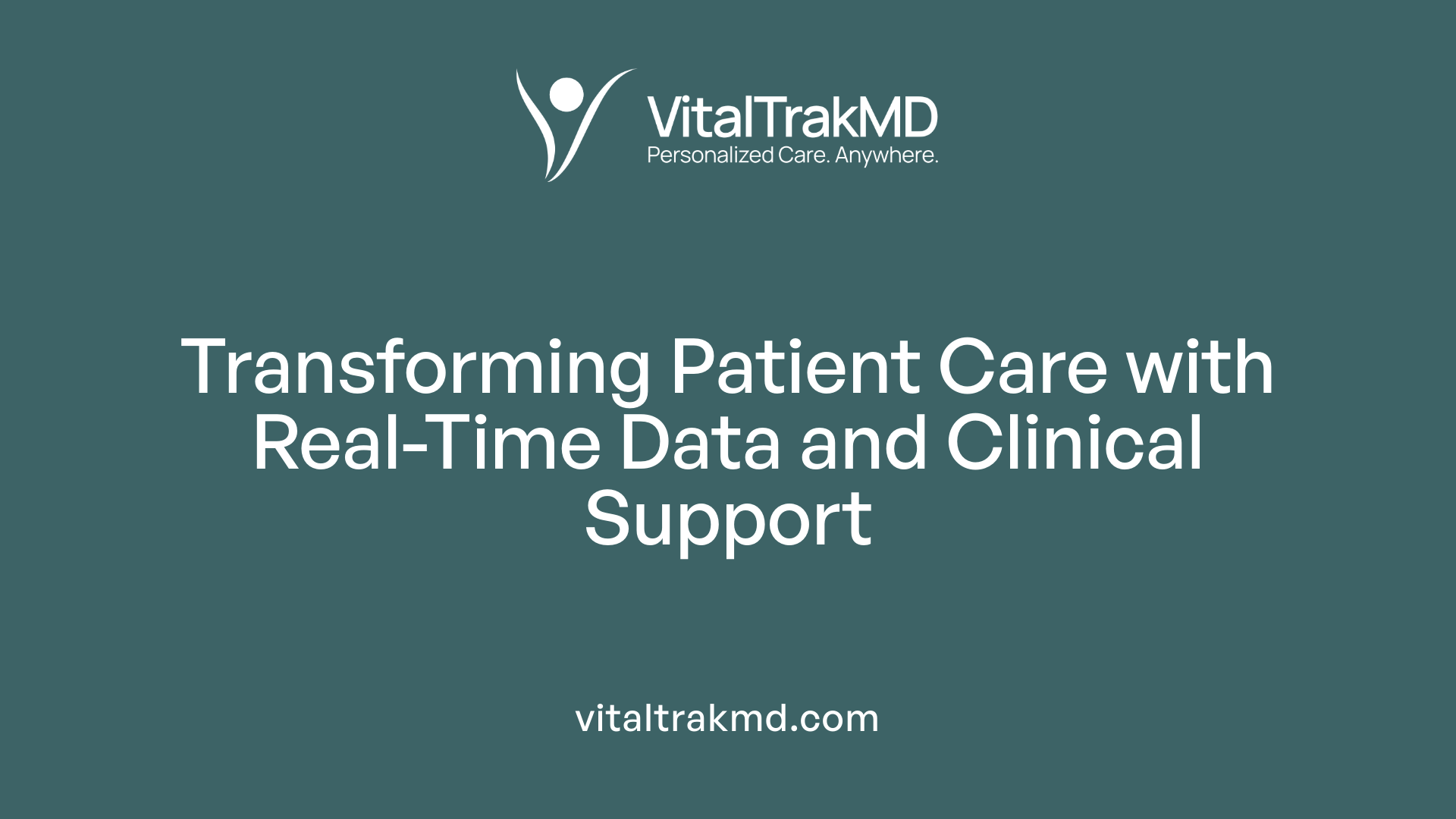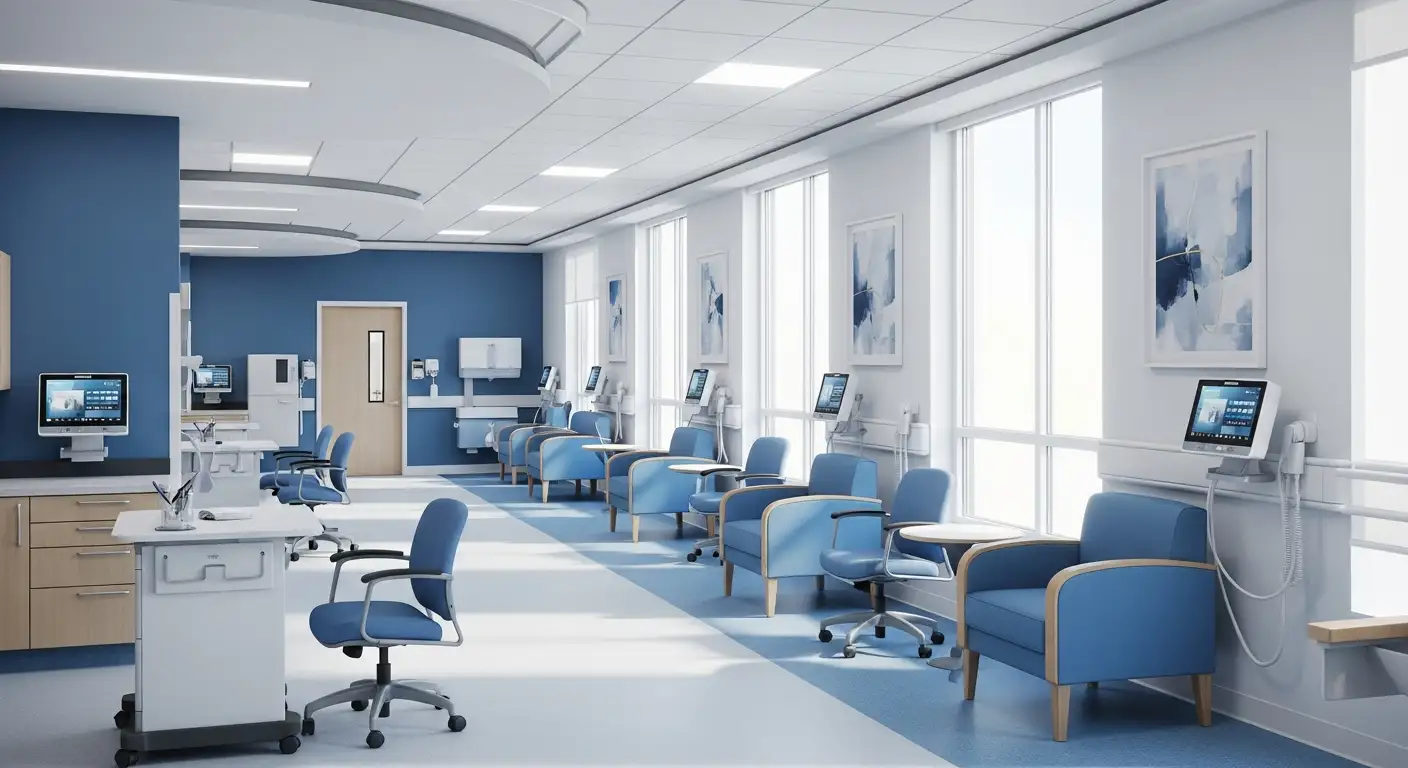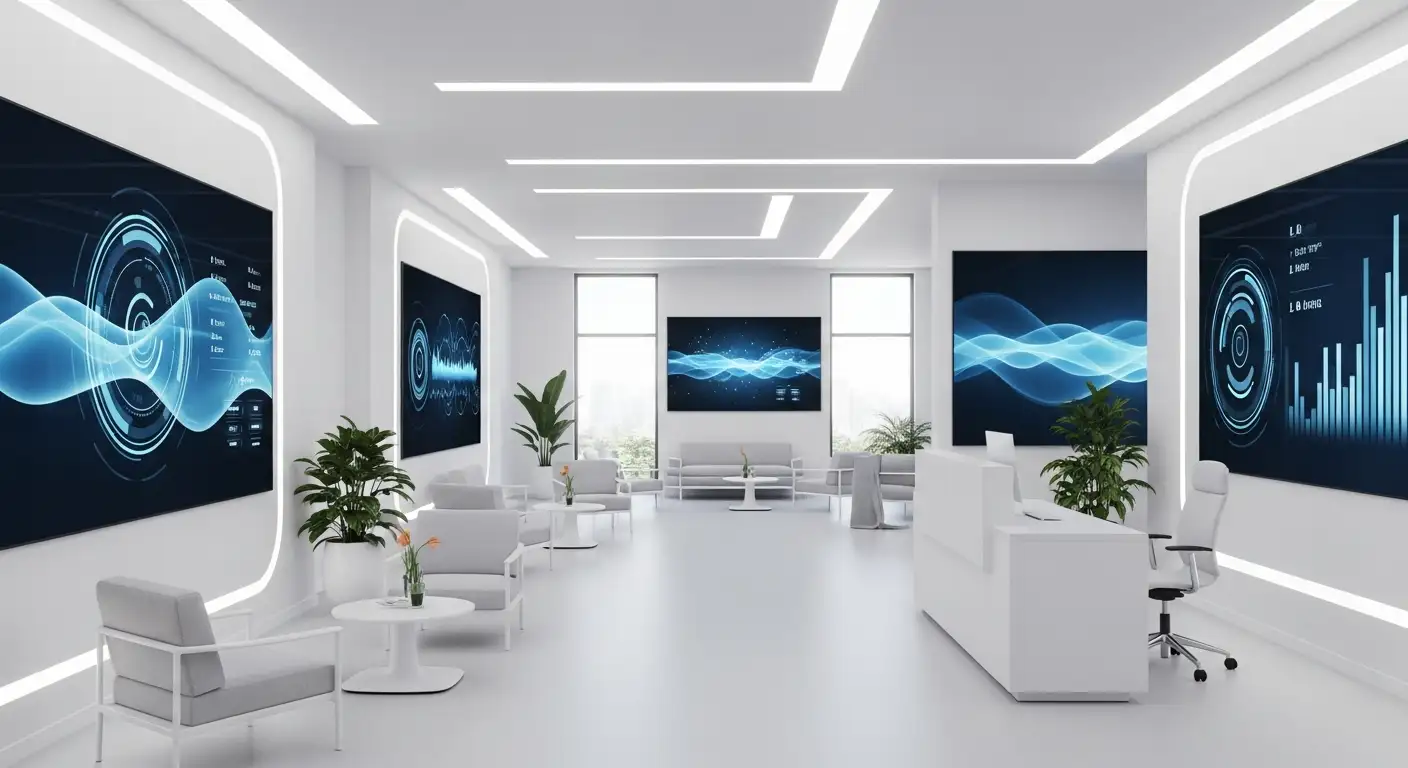Who Are the Healthcare Professionals Behind VitalTrak?

Unveiling the Professionals Behind VitalTrak’s Success
VitalTrak stands at the forefront of healthcare technology, revolutionizing patient monitoring and safety through intelligent, clinically precise devices. Central to its success are the dedicated healthcare professionals and expert team members whose combined efforts drive product development, clinical validation, and seamless integration into healthcare systems. This article explores the diverse group of professionals behind VitalTrak, their backgrounds, roles, and the collaborative efforts that underpin this innovative platform.
The Healthcare Providers Using VitalTrak’s Technology

Who are the healthcare professionals involved with VitalTrak?
VitalTrak’s technology is primarily utilized by healthcare professionals engaged in remote patient monitoring and critical care. These include nurses and respiratory therapists who are directly involved in managing patients with complex needs. They depend on the Vital Sync™ remote monitoring system to observe vital signs such as SpO2 levels, respiratory rates, and ventilator data.
The platform allows these professionals to oversee patient conditions remotely, enabling timely medical responses and adjustments to treatment plans. Hospital teams, including clinicians responsible for ventilator management and patient stability, benefit from quick access to real-time data that supports clinical decision-making.
While the list of professionals isn’t exhaustive, the system is designed to integrate seamlessly into multidisciplinary healthcare teams. Its primary goal is to enhance collaboration within hospital environments, ensuring patient safety and optimized outcomes.
What roles do healthcare professionals play in the operation and development of VitalTrak?
Healthcare professionals are essential partners in the ongoing development and utilization of VitalTrak’s solutions. They not only use the system for patient care but also influence its evolution through feedback and insights. Their engagement helps shape the platform's features, ensuring it addresses real-world clinical challenges.
Particularly, nurses and respiratory therapists benefit from VitalTrak’s supportive programs targeted at improving their mental health and overall well-being. When care teams are supported and well-equipped, patient care becomes more effective and compassionate.
Their role extends beyond operational use; healthcare workers contribute to a culture of collaboration by providing feedback during implementations, guiding product improvements, and advocating for clinical best practices. This participatory approach fosters a healthcare environment that prioritizes safety, ethical standards, and continuous improvement.
The importance of monitoring in healthcare settings
VitalTrak’s tools, including the remote monitoring systems like Vital Sync™, are vital in modern healthcare. They enable real-time tracking of critical vital signs and ventilator data, which is essential for managing high-risk patients.
The integration of such technology supports clinical decisions, reduces delays in treatment, and ensures that healthcare providers can promptly respond to changing patient conditions. This is especially important in settings where time-sensitive interventions can significantly impact patient outcomes.
Supporting clinical decision-making and patient safety
The platform’s data-driven approach enhances clinical decision-making by delivering precise, reliable information directly to the care team. The system’s hospital-grade accuracy, with no calibration needed, reassures clinicians of the data’s validity.
Furthermore, by maintaining long-term accuracy and ease of use, VitalTrak promotes consistent monitoring practices. The collaboration among hospital staff, facilitated by these technological advances, helps maintain high standards of patient safety.
| Professionals Involved | Role in System Deployment | Impact on Patient Care | Additional Details |
|---|---|---|---|
| Nurses | Monitor patient vitals; manage care | Improve response times; enhance patient comfort | Active users of VitalSync™ for real-time updates |
| Respiratory Therapists | Oversee ventilator settings; assess respiratory status | Ensure effective ventilation and early intervention | Critical in managing complex respiratory cases |
| Hospital Care Teams | Coordinate multidisciplinary care | Streamline workflows; elevate safety standards | Collaborative execution across departments |
| Clinical Staff | Provide ongoing patient assessments | Quality improvement; adherence to protocols | Involved in AI data interpretation and decision support |
This comprehensive system exemplifies the merging of technology and clinical expertise, optimizing patient care and safety through innovative remote monitoring solutions.
The Expert Minds Building and Validating VitalTrak’s Technology
VitalTrak was founded by a team of professionals with diverse backgrounds in healthcare, technology, and strategic management. Although specific details about all individual credentials are not publicly expansive, the team’s collective expertise is evident through their strategic collaborations and leadership roles.
The development team includes Sathvik Bilakanti and Roman Di Cesare, whose backgrounds indicate strong capabilities in healthcare technology and product development. A notable figure associated with the team is Matthew J. Rodgers, a co-founder of iprospectcheck, a healthcare background screening company with over 30 years of strategic leadership. Rodgers' membership in the Professional Background Screeners Association highlights his deep industry knowledge and adherence to rigorous industry standards. This background underscores the team’s focus on combining healthcare expertise with technological precision and regulatory compliance.
VitalTrak’s leadership is further strengthened by individuals with extensive experience in SaaS, enterprise platforms, legal compliance, security, and financial management. Kristin Stafford, Founder and CEO of Vital4, brings over 25 years of experience in SaaS solutions and enterprise platforms, guiding the company’s strategic and technological directions. Amy Barbieri, as Co-Founder, President, and Chief Growth Officer, directs sales, marketing, and growth strategies to expand the company’s reach and impact.
Another core member is Scott Stafford, serving as Chief Information Officer. He oversees software development, ensuring that the company’s offerings remain innovative and functional. Dawn Marchand, the Chief Legal and Compliance Officer, focuses on maintaining adherence to healthcare regulations and legal standards, which is crucial for healthcare technology deployment.
Cybersecurity is a vital concern in healthcare data management, and Robert Fenech Santucci, the Chief Information Security Officer, is responsible for safeguarding patient data and maintaining system integrity.
The leadership team’s backgrounds reflect a strategic mix of healthcare, SaaS, security, and regulatory expertise. Their collective efforts enable VitalTrak to develop and deliver clinically precise blood pressure monitoring devices—such as VitalSense™ sensors—that are trusted by hospitals and healthcare providers.
Moreover, VitalTrak’s innovative approach includes input from cardiologists and healthcare professionals, ensuring that their technological solutions deliver hospital-grade accuracy in a home setting. This collaboration exemplifies the company’s commitment to bridging medical expertise with advanced technological systems.
These professional strengths have propelled VitalTrak to be used in over 100 hospitals, improving patient outcomes and reducing workload for care teams. The strong foundation of healthcare and tech leadership positions VitalTrak as a forward-thinking leader in digital health solutions.
In essence, the team behind VitalTrak melds healthcare insights, technological innovation, and regulatory expertise, ensuring their development of advanced, reliable blood pressure monitoring devices that aim to revolutionize home healthcare and remote patient management.
The Role of Medical Oversight and Professional Endorsements in VitalTrak’s Validation

What is the professional oversight, development, or endorsement of VitalTrak products or programs?
VitalTrak’s blood pressure monitoring devices, including those supported by NHS England, undergo rigorous validation processes to ensure their accuracy and reliability. While these specific devices are not officially listed on the American Medical Association's (AMA) validated blood pressure measurement device list (VDL™), the validation occurs through independent organizations like the National Opinion Research Center (NORC) at the University of Chicago. NORC conducts comprehensive reviews following criteria established by hypertension experts, thereby providing an objective assessment of device performance. This process demonstrates a high level of professional oversight, even if formal endorsement by major bodies like the AMA is not explicitly documented.
The validation framework involves assessing how accurately these devices measure blood pressure in clinical settings, promoting confidence among healthcare providers and patients alike. The ecosystem of validated devices is expanding, which highlights the importance placed on verifying blood pressure monitors’ precision before widespread adoption. This scrutiny safeguards patient safety and fosters trust in home blood pressure management tools.
How does healthcare professional involvement influence the development and trust in VitalTrak’s devices?
Healthcare professionals play a vital role in shaping the development and credibility of VitalTrak’s devices. Their clinical insights, feedback, and validation efforts help ensure that the technology aligns with medical standards. Notably, VitalSense™ sensors are designed with direct input from cardiologists to deliver hospital-grade precision, enabling accurate readings for at-home use.
This collaborative approach involves continuous engagement with clinicians to refine device functionality and ensure consistency with healthcare protocols. The result is a product that healthcare providers can confidently recommend. Furthermore, independent validation efforts, like those by NORC, reinforce that these devices meet rigorous standards of accuracy.
By integrating professional expertise into product development, VitalTrak enhances trust among healthcare providers and patients. This process not only guarantees high accuracy but also encourages wider clinical adoption, integrating home monitoring into routine hypertension management.
Ensuring device accuracy and clinical trust
The importance of device accuracy in clinical settings cannot be overstated. VitalTrak’s emphasis on factory calibration and the absence of calibration requirements for its devices ensure long-term reliability. These features are designed following consultation with cardiologists and other medical professionals.
The trust in these devices is further supported by their usage across more than 100 hospitals, where they contribute to improved patient satisfaction, better clinical outcomes, and reduced workload for care teams. Patient testimonials and healthcare reports consistently highlight the reliability of VitalTrak’s technology.
| Certification / Validation Body | Device Status | Role in Ensuring Trust | Additional Notes |
|---|---|---|---|
| NORC at University of Chicago | Validation | Independent assessment of blood pressure monitors | Validates device accuracy based on clinical criteria |
| British and Irish Hypertension Society | Resource Provider | Offers guidance for healthcare professionals | Supports integration of validated devices into practice |
| VitalSense™ Technology | Product Feature | Provides hospital-grade accuracy at home | No calibration needed, factory calibrated |
This robust validation and professional involvement create a strong foundation for clinical trust and widespread acceptance of VitalTrak’s monitoring solutions.
A Collaborative Effort Ensuring Quality and Trust in Healthcare Technology
The development and ongoing validation of VitalTrak’s innovative medical devices are led by a multidisciplinary team of healthcare professionals, industry experts, and technology specialists. Their combined efforts ensure that VitalTrak products meet stringent standards of accuracy and reliability, fostering trust among clinicians and patients alike. As healthcare continues to evolve with digital innovations, the collaboration between clinical practitioners, developers, and regulatory bodies remains crucial. Through dedicated teamwork and professional oversight, VitalTrak stands as a testament to the power of multidisciplinary cooperation in advancing high-quality healthcare solutions for the modern world.
References
- Home blood pressure monitoring - NHS England
- Vitaltrack® Blood Pressure Monitor – Accurate, Easy to Use, Medical ...
- Leading Patient Experience Technology | Vital Healthcare - Vital.io
- BP monitoring you can count on—list of validated devices grows
- VITAL WorkLife Careers | Fostering Organizational Well-Being
- Healthcare Background Checks: A Complete Guide [2025]
- Working as a team to improve patient care - PMC
- HealthCast™ Vital Sync™ Remote Patient Monitoring - Medtronic
- Home - VitalCore HS
Recent articles
Want to Feel Better and Live Healthier?
Join hundreds of patients taking control of their health with personalized care that fits their life – not the other way around.
Rated 4.8/5 by 32+ customers







